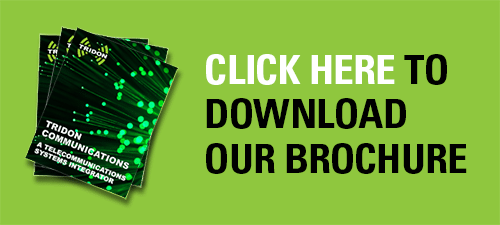The term ‘access control’ is almost self-explanatory: it’s the practice of controlling access to particularly sensitive areas. Access control measures may be applied to a Calgary warehouse to protect valuable inventory or equipment. They may be applied to a refinery or a mine site in the Fort McMurray area, ensuring only authorized personnel, trained in the safe practice of on-site activities could enter. Access control measures could just as easily be applied to an Edmonton apartment building, ensuring only residents, their guests, or other authorized personnel could enter.
Access control is everywhere, and there are aspects of it that most of us interact with. like fob key readers. Devices like those are easy to understand, at least on a basic level. But if you’re in charge of building an access control system for your facility, you’ll need to know a lot more than the basics. That’s why we’ve built this list of key terms. It’ll serve as a quick and easy reference guide if you ever need one.
Tridon’s Service Technicians and Client Support Specialists have a great deal of experience creating and supporting access control systems for clients working in a range of industries in Alberta. If you have any questions about your own system, or about building a new one, Contact Us, and we’ll answer them.
For now, here’s the list.
Access Card |
A card, roughly the same size as a debit or credit card, that can be programmed with the credentials required to get the holder through a secured entrance or exit and into a restricted area. |
Access Code |
An alphanumeric sequence that, when entered correctly, grants access to restricted areas. |
Access Control System |
An access control system or network is the interconnected collection of control units regulating all secured entrances and exits. |
Access Control Unit |
A device, like a keypad or a card reader, that interacts with a credential (key card, access code) to grant access to secured areas.
|
Access Group |
A superset of information that is applied to the credentials of authorized personnel. This information can be tailored so that this group can only enter/exit a control point during certain times of day or under certain conditions. |
Access Level |
A security rating that must be met or exceeded before an individual will be granted entry to a restricted area. |
Access Mode |
The point at which all access conditions required by the control unit(s) have been met, and access through the control point is allowed. |
Access Parameters |
Conditions that must be met before access is granted. Parameters can include the time, key cards, access codes, and biometric data, among other things. |
Alarm Annunciation |
The announcement that an alarm event has occurred. The annunciation can take the form of an audible alarm, flashing lights, and/or pop-up notifications on a computer in the event of software-based or remote alarm monitoring. |
Alarm Input |
A security device that is connected to and monitored by an access control unit. Unauthorized attempts to gain entry can trigger the alarm. |
Alarm Mask |
Alarm masking suppresses the annunciation of a triggered alarm while maintaining and carrying out all other reporting requirements. |
Anti Passback |
A process or piece of software that prevents an individual from passing through a control point and then giving their access card to the person behind them so that they too could pass through the control point. An example of this could be the barricade that rises and lowers at a parking garage entrance/exit. |
Biometric Access Control |
The practice of using unique human traits (fingerprints, hand geometry, retinal patterns, voice, etc.) to identify an individual as being authorized to access a secure area. |
Control Center |
A central location where alarms and access to secured areas are monitored and security personnel are located. |
Control Point |
A door, gate, turnstile or any other barrier that secures an area against unauthorized access. This control, or access, point is regulated by an access control unit. |
Degraded Mode |
A setting in access control units that defaults the unit to a minimum authorization level requirement in the event of a control unit failure. |
Door Contact |
A device installed in the door that can detect the door’s position (open, closed, etc.). These devices are sometimes referred to as ‘Door Switch Monitors’. The signal sent from a Door Contact is sent to the security system and can report if a door has been forced or held open. |
Door Control Relay |
A relay used in an access control system to control locking and unlocking of doors, such as those controlled by fob or access card readers, and can also inform personnel when a door has been forced or is held open. |
Duress Alarm |
A device, like a button, that is connected to a security system and can be used to alert security personnel if someone is being threatened. Banks are an example of a business that makes use of duress alarms. |
Event |
A situation that creates a message which is recorded by the access control unit. This situation is not necessarily an emergency; it can be something as simple as an authorized individual opening a secured door. |
Exit Alarm |
An alert that is triggered when a secure door is forced open. It may be audible or inaudible, depending on the security system design. |
Fail-Safe Door |
Fail-safe doors automatically unlock in the event of a power failure, meaning all personnel can enter or exit a secured area without interacting with a control unit. This is a safety measure.
|
Fail Secure |
Fail secure doors automatically lock in the event of a power failure, preventing entry into the secure area until power is restored. Those already in the secured area will be permitted to exit through the fail-secure door. |
Global Unlock |
A signal that, when sent to the access control system, unlocks all connected doors. |
Magnetic Lock |
A locking mechanism consisting of an electromagnet (mounted on the frame) and a strike plate (mounted on the door). When activated, the strength of the electromagnet keeps the door in a closed, locked position. |
Man Trap |
Man traps generally consist of two entrances separated by a contained area, like a corridor. The entrances are monitored and regulated by control units, and only one may be open at a time. This regulates access as well as the flow of authorized personnel into the secured area. |
Signature Verification |
A form of biometric access control that uses a person’s signature characteristics (style of writing, the pressure applied to pen, etc.) to grant or deny access. |
Storeroom Function |
Doors with Storeroom Function applied are always in the locked position from the unsecured side. Should a key be used to open it, the door will automatically return to the locked position once the key is removed. |
Tailgating |
A term used to describe the practice of multiple people entering a secured area based on the credentials of a single authorized person. |
Time Schedule |
A time schedule allows for time and date to be used as criteria for access. |
Transaction |
A record that contains information relevant to an interaction with an access control unit (time, date, user, forced entry, etc.). |
Turnstile |
A physical barrier often used at security checkpoints to verify authorization and regulate traffic flow. |
Voice Recognition System |
An access control method that uses characteristics of an individual’s voice to grant or deny access. The person attempting to access a secured area must speak a word or phrase. The audio provided is compared to a previously recorded sample, and access is granted or denied accordingly. |
Tridon is a full solution Telecom Systems Integrator with CSA certification and licensed by APEGA. Our Engineering, Service and Tower Divisions collaborate with customers to build engineered solutions including communications systems design, tower inspections, and co-location, wireless broadband, fiber optic cabling, site security, and two-way radio communication.



